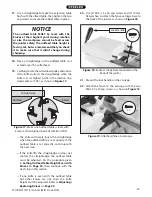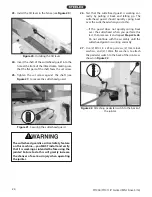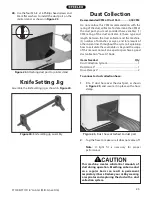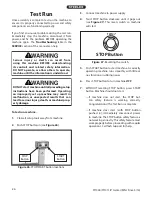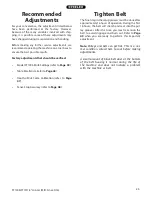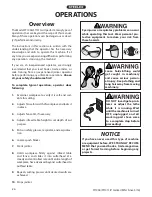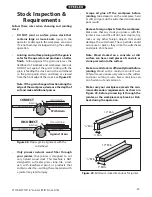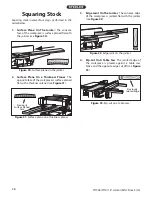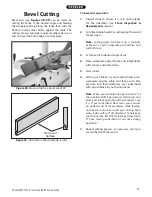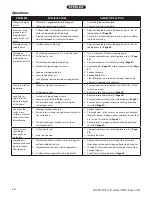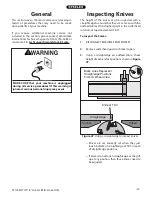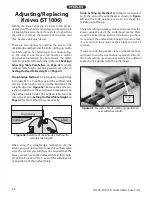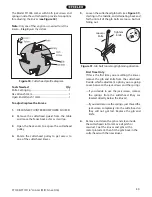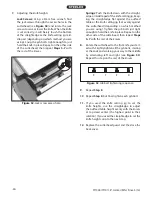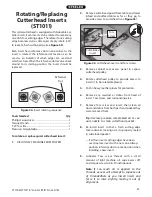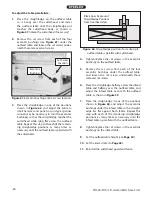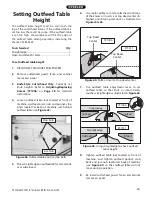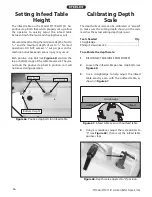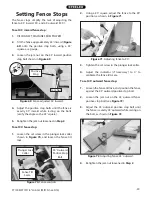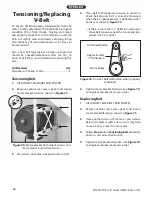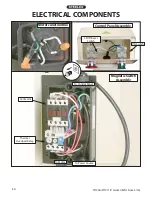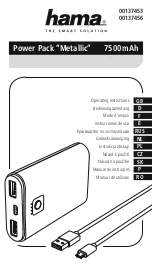
ST1006/ST1011 8" Jointer (Mfd. Since 3/16)
-35-
Motor and Electrical
PROBLEM
POSSIBLE CAUSE
CORRECTIVE ACTION
Machine does not
start or a breaker
trips immediately
after startup.
1. STOP button depressed.
2. Incorrect power supply voltage or circuit size.
3. Power supply circuit breaker tripped/fuse blown.
4. Motor wires connected incorrectly.
5. Wiring open/has high resistance.
6. START/STOP switch at fault.
7. Start capacitor at fault.
8. Thermal overload relay has tripped.
9. Contactor not energized/has poor contacts.
10. Centrifugal switch at fault.
11. Motor at fault.
1. Rotate button head to reset.
2. Ensure correct power supply voltage and circuit size.
3. Ensure circuit is sized correctly and free of shorts. Reset
circuit breaker or replace fuse.
4. Correct motor wiring connections.
5. Check/fix broken, disconnected, or corroded wires.
6. Replace switch.
7. Test/replace.
8. Reset; adjust trip load dial if necessary; replace.
9. Test all legs for power/replace.
10. Adjust/replace centrifugal switch if available.
11. Test/repair/replace.
Machine stalls or is
underpowered.
1. Workpiece material not suitable.
2. Excessive feed rate.
3. Excessive depth of cut.
4. Dull knives/inserts.
5. Dust collection problem, causing internal
components to clog up with shavings.
6. Belt slipping; oil/grease on belt.
7. Pulley loose or not properly aligned.
8. Motor overheated.
9. Plug/receptacle at fault.
10. Run capacitor at fault.
11. Contactor not energized/has poor contacts.
12. Motor at fault.
1. Ensure workpiece is suitable for jointing (Page 27).
2. Reduce feed rate.
3. Reduce depth of cut.
4. Sharpen/replace knives (Page 38); rotate/replace
inserts (Page 41).
5. Clear blockages; move machine closer to dust collector;
upgrade dust collector.
6. Tension/replace belt (Page 48); clean belt; ensure
pulleys are aligned (Page 49).
7. Re-align pulleys; replace shaft key; tighten pulley set
screw.
8. Clean motor, let cool, and reduce workload.
9. Test for good contacts/correct wiring.
10. Test/repair/replace.
11. Test all legs for power/replace.
12. Test/repair/replace.
Machine has
vibration or noisy
operation.
1. Motor or other component loose.
2. Belt worn or loose.
3. Motor fan rubbing on fan cover.
4. Pulley loose or not properly aligned.
5. Knives/inserts at fault.
6. Cutterhead bearings at fault.
7. Centrifugal switch at fault.
8. Motor bearings at fault.
1. Inspect/replace damaged bolts/nuts, and retighten
with thread locking fluid.
2. Inspect/replace belt (Page 48).
3. Fix/replace fan cover; replace loose/damaged fan.
4. Re-align pulleys; replace shaft key; tighten pulley set
screw.
5. Resharpen/replace knives; set knife alignment/height
correctly.
6. Replace bearing(s)/realign cutterhead.
7. Replace.
8. Test by rotating shaft; rotational grinding/loose shaft
requires bearing replacement.
The following troubleshooting tables cover common problems that may occur with this machine. If you need
replacement parts or additional troubleshooting help, contact our Technical Support.
Note: Before contacting Tech Support, find the machine serial number and manufacture date, and if available, your
original purchase receipt. This information is required to properly assist you.
Troubleshooting
SERVICE

